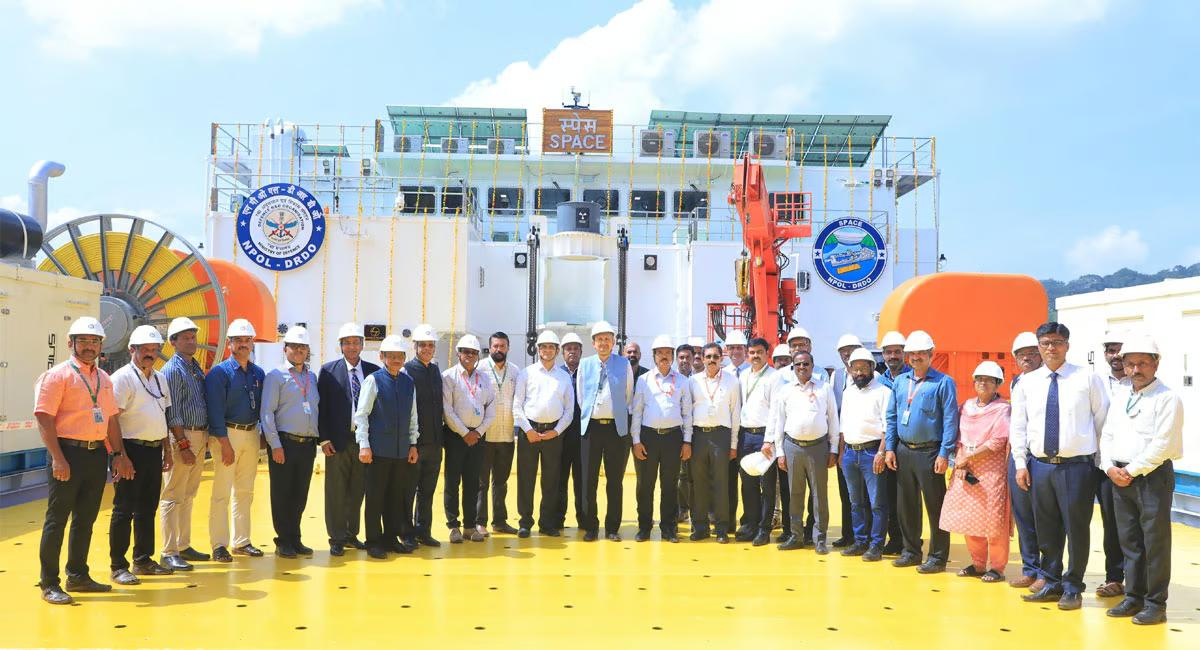Submersible Platform for Acoustic Characterisation and Evaluation (Space)

- 18 Apr 2024
Why is it in the News?
A state-of-the-art Submersible Platform for Acoustic Characterisation and Evaluation (Space) was inaugurated by Secretary, Department of Defence (R&D) and DRDO Chairman Samir V Kamat at Underwater Acoustic Research Facility, Kulamavu in Idukki district of Kerala recently.
About Submersible Platform for Acoustic Characterisation and Evaluation (SPACE):
- Developed by the Naval Physical & Oceanographic Laboratory of the Defence Research and Development Organisation (DRDO), SPACE is a premier testing and evaluation hub for sonar systems used by the Indian Navy across various platforms, including ships, submarines, and helicopters.
Key Features:
- Two primary components:
- A floating platform on the water's surface and
- A submersible platform that can be lowered up to 100 meters using winch systems.
- Facilitates quick deployment and recovery of scientific packages like sensors and transducers.
- Suitable for surveying, sampling, and data collection of air, surface, mid-water, and reservoir floor parameters using advanced scientific instrumentation.
- Well-equipped scientific laboratories cater to data processing and sample analysis requirements.
Uses:
- Evaluating complete sonar systems, enhancing research capabilities in Anti-Submarine Warfare.
- SPACE enables researchers to explore innovative solutions for underwater acoustic challenges, improve naval capabilities, and ensure the security of Indian waters.
What is Sonar?
- SONAR, which stands for Sound Navigation And Ranging, is a technology that uses sound waves to detect, locate, and map objects underwater.
- It operates on the principle of echolocation, similar to how bats and dolphins use sound to navigate and find their prey.
- The Sonar system consists of a transmitter, a receiver, and a display.
- The transmitter sends out sound waves, which travel through water and reflect off objects in their path.
- These reflected waves, or echoes, are then received by the receiver.
- By measuring the time it takes for the echoes to return and the strength of the received signal, the system can determine the distance, direction, size, and shape of the underwater object.
Sonar has various applications, including:
- Maritime navigation: Commercial ships and submarines use sonar to navigate through unfamiliar waters, avoid obstacles, and create underwater maps.
- Military applications: Sonar plays a crucial role in military operations for detecting and tracking enemy submarines, underwater mines, and other threats.
- Fishing and underwater research: Sonar helps fishermen locate schools of fish and is also used by scientists and researchers to study marine life, underwater topography, and archaeological sites.
